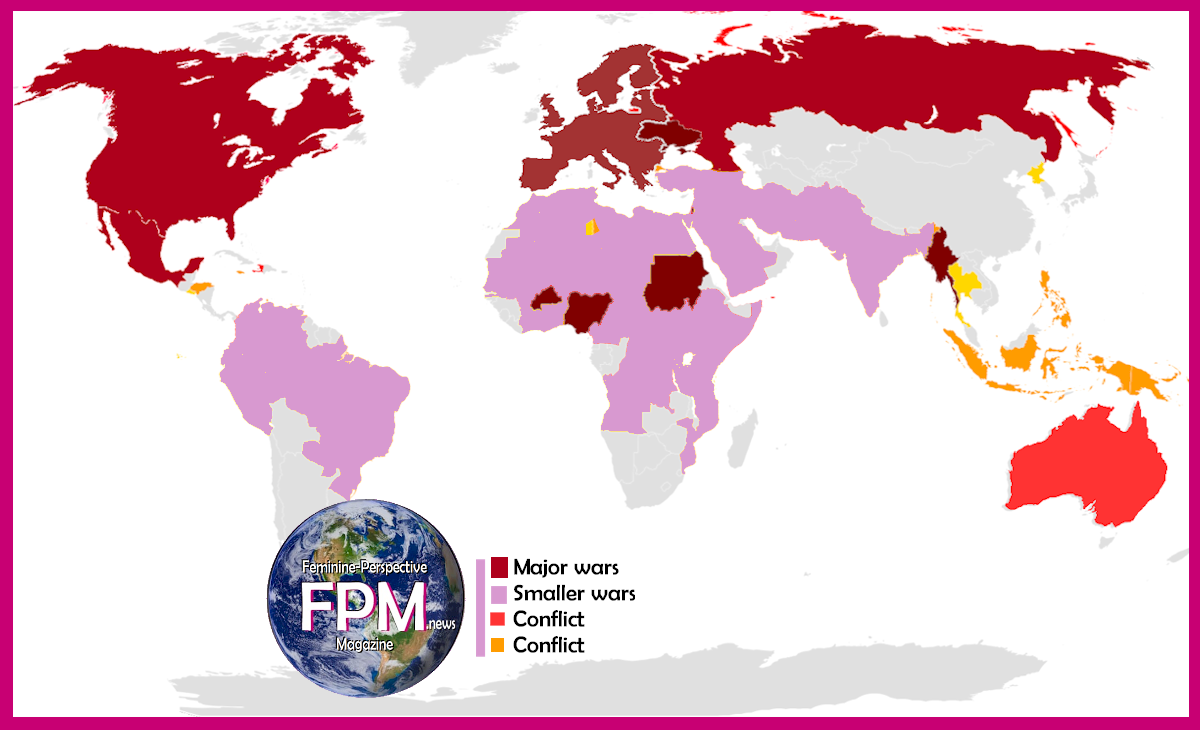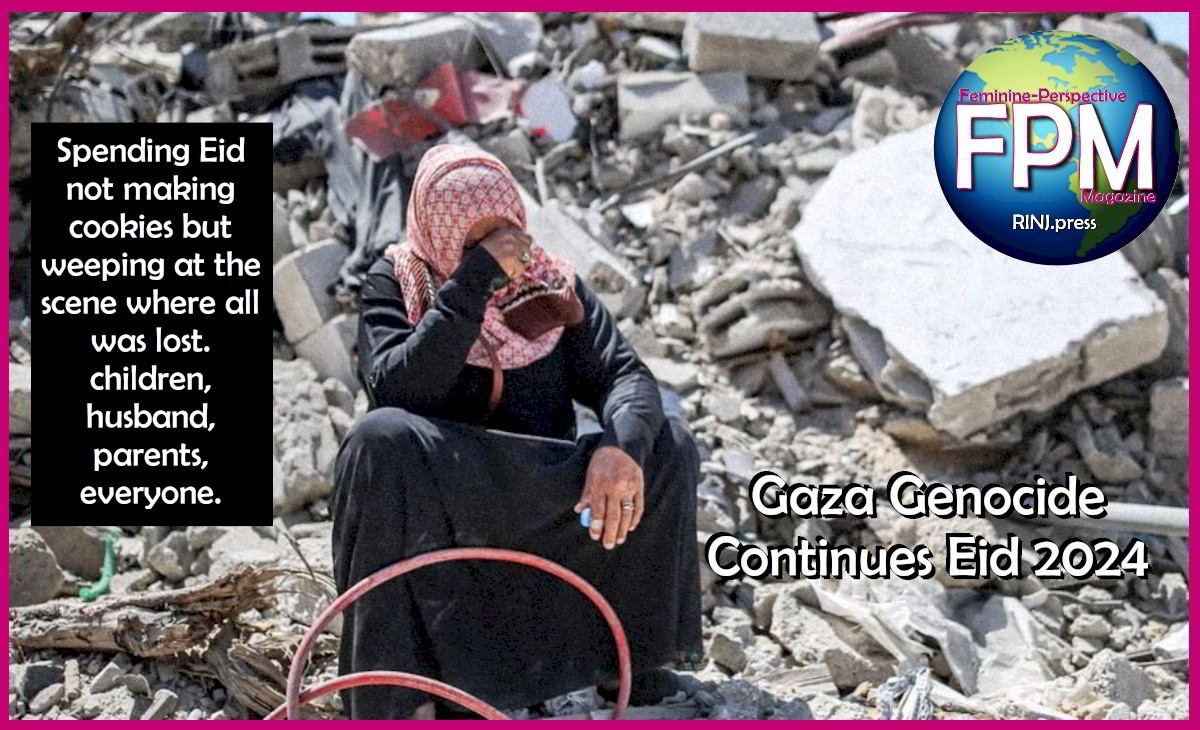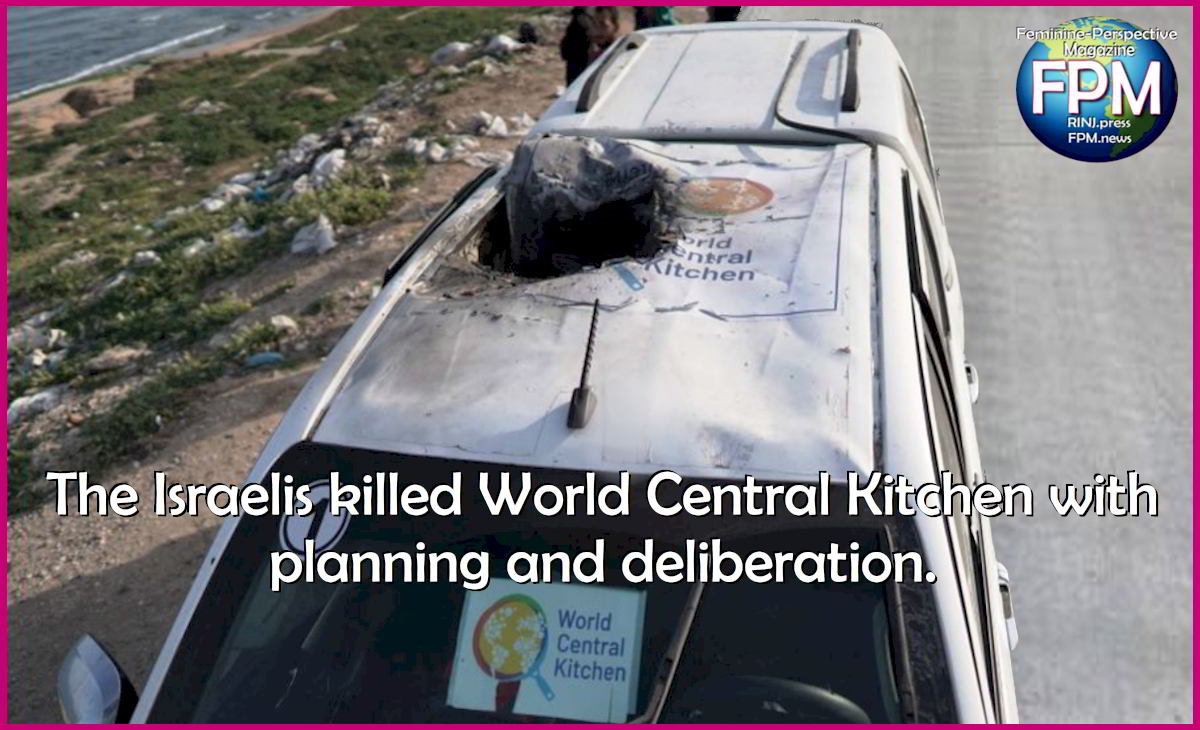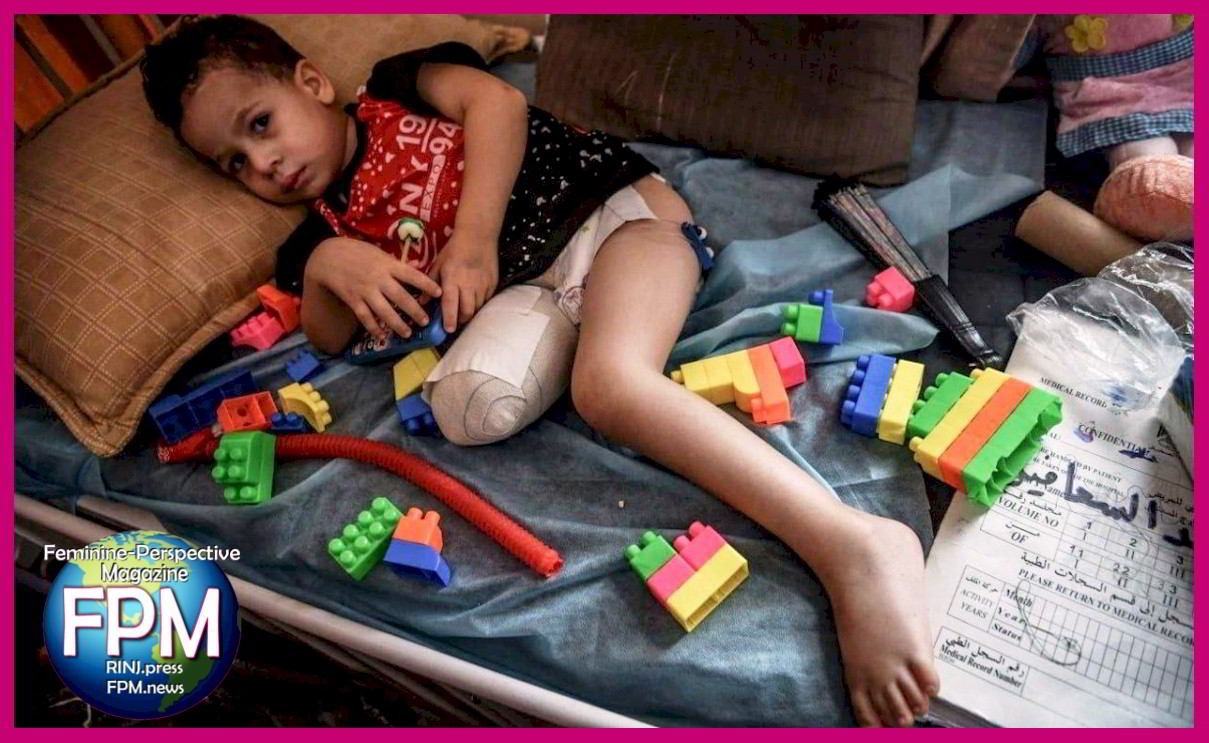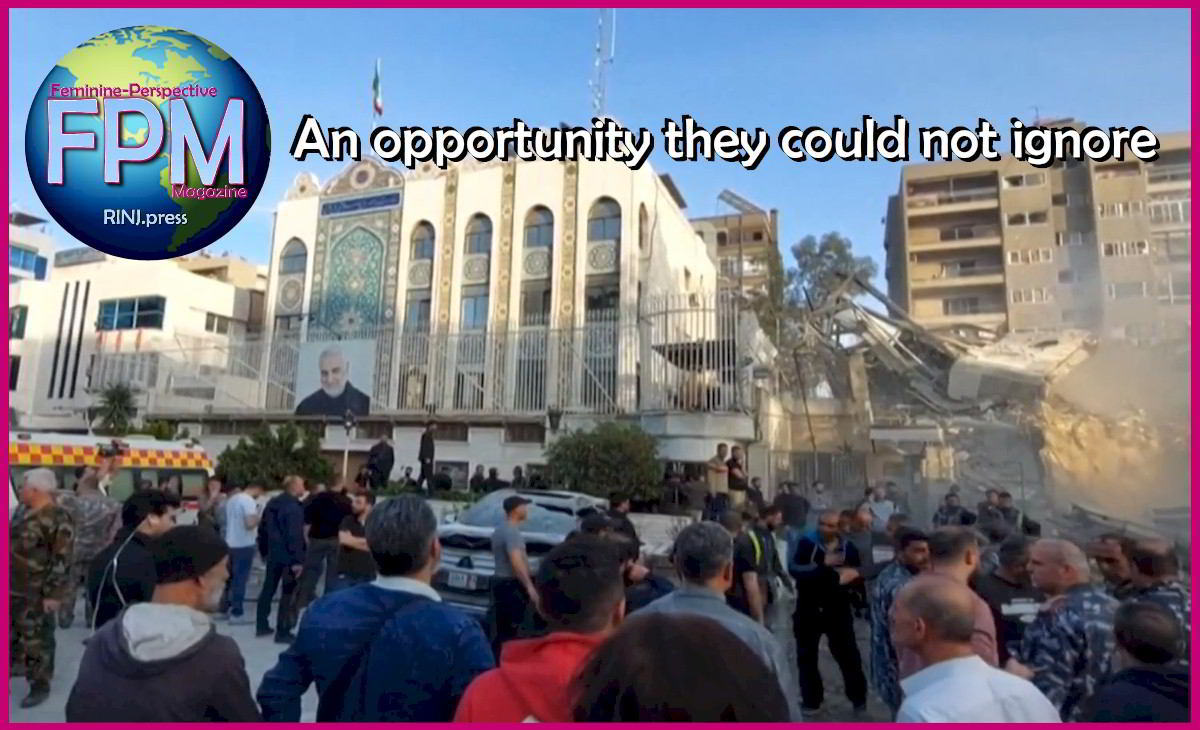The World Health Organization (WHO) declared COVID-19 a pandemic on 11 March 2020.
Republished with permission of Feminine-Perspective Magazine
Originally Published 3 February, 2020
The stealth of the 2019-nCoV pathogen is its unreported mild-infection of perhaps hundreds of thousands of people in China. Several epidemiologic and etiologic investigations have been conducted by many respected scientists by now and the data is being digested and used to create understanding, tests, and hopefully a vaccine in fairly short order.
Because of the stealth of most 2019-nCoV infections, its mellow indications in the midst of cold-and-flu-season raised little alarm thus delayed reactions around the world, including those of the World Health Organization.
As of 3 February 06:09 GMT there had been 17,388 2019-nCoV cases officially confirmed and 362 known deaths across at least 27 countries. Estimates of well over 100,000 cases of unreported, especially mild cases, are supported by anecdotal evidence submitted by hundreds of medical experts. Despite known statistics, the morbidity of 2019-nCoV is categorically unknown and may not be determined for some time.
2019 nCoV is A Pandemic by any Definition
On 24 February 2010, the WHO defined a pandemic as “the worldwide spread of a new disease”.
“There are at present two significant pandemics if influenza and its changing genome and heightened morbidity will allow people to think of it as ‘new’. The 2019-nCoV crisis is clearly no longer an ‘outbreak’ but a pandemic, said the CEO of The RINJ Foundation this morning.
World Health Organization Admits “Moderate nCoV Risk” was an understatement. The risk was “High” always.
The only entity in the world that got this right was the Chinese government in Beijing led by the medical people (not the politicians or bureaucrats) on the ground in the capital city of Central China’s Hubei province, Wuhan.
There is nother petition now circulating on Change.org for a “Call for the resignation of Tedros Adhanom Ghebreyesus, WHO Director General“. At the time of publication the latest petition against Dr. Tedros had 171,977 signatures.
“The petition on change.org, despite changing some racist content, is reprehensible, racist by intent and should be taken down by the site or the site should be closed by the Domain Registrar until the pandemic has dissipated,” said the CEO of The RINJ Foundation when asked by FPMag.
“But that’s my personal opinion at this time,” the CEO added. “We need medical soldiers like Dr. Tedros on his best game, hence we must all chip in with our support for this global leader and the common goal of defeating these raging pandemic pathogens which will otherwise kill hundreds of thousands of precious lives, needlessly.”
 Dr. Tedros is leading the global fight against two pandemics. Adhanom, Photo Courtesy World Health Organization. Photo Art/Cropping/Enhancement: Rosa Yamamoto FPMag
Dr. Tedros is leading the global fight against two pandemics. Adhanom, Photo Courtesy World Health Organization. Photo Art/Cropping/Enhancement: Rosa Yamamoto FPMag
“Dr. Tedros is adamant on fighting the 2019-nCoV as a unified humanitarian effort.”
The RINJ Foundation is a global civil society women’s group which sponsors and also operates humanitarian medical services including The Nurses Without Borders, in world trouble spots. The RINJ group has already launched a campaign of solidarity with all nations fighting the 2019-nCoV pandemic, particularly China, Japan and Thailand.
The words of Nurse Sara Qin inside Wuhan are instructive:
“Most patients are having a very good outcome,” she insists. “Yes, sadly the demise of patients who already have serious, and unfortunately chronic illness they did not treat, is hastened by the 2019-nCoV. We always told patients they must take their chronic illness medications and report any change. Now people should know how important that has become, to care for their chronic illness and not be vulnerable.”
“There are so many patients now,” Nurse Qin continued, “but they are very grateful and helpful to their case. I really love all my patients. I keep them from being scared. When they get well again, they bounce back. I mean they are very jubilant and it is as if they never were sick and just lost a little weight. Everyone, I hope will be fine,” she said optimistically. From: “China 2019nCoV cases near 12k but nurses say many Pts have a good outcome”
“70% Of all the world’s professional medical health workers are female,” claims both the World Health Organization and the Canada-based RINJ Foundation.

Photo, Art/Cropping/Enhancement: Rosa Yamamoto FPMag
“Among the mildly infected patients,” notes Nurse Qin, “were some who already had underlying chronic health problems. Examples of chronic health problems include asthma, COPD, HIV, hypertensive heart disease, diabetes and more. These are just a small few chronic illnesses that if treated properly, will not change the longevity or the fullness of their lives,” she suggested.
But chronic illness is exploited by the 2019-nCoV.
“HATE 2019-nCoV if you want to hate anything. Certainly don’t hate your fellow man of any race,” says nurse devoted to fighting 2019-nCoV
“If you want to abuse, hate or discriminate against anything, hate the coronavirus that has been named 2019-nCoV,” says Sara Qin, a RINJ nurse in Wuhan City, China.
“In fact one can hate a few of its variants as well like the 229E, OC43, NL63, and HKU1 strains which typically cause everyone common cold symptoms, even in immunocompetent individuals,” Nurse Qin added.
“We trust the World Health Organization’s people including Dr. Tedros, but the patient will only see me and their Doctor, not administrators,” is the stiff response of a nurse team leader.
“Many RINJ nurses have worked for WHO projects, such as the recent draining battles against the deadly Ebola virus,” says one such nurse team leader.
“The most common complaint they have is that the World Health Organization is enormously bureaucratic,” adds Nurse Michele Francis, working in a health care project inside Venezuela.
“In our organization, which is a flea-size compared to the WHO,” quips Nurse Francis, there is a folder called Apology Directives. In it is a pre-scheduled apology release from the CEO, which says ‘sorry the paperwork did not get done before the care was given to a patient in need’.”
“We are all one in the fight against 2019-nCoV.”

This is simple. Like this simple flower, all are based on the one.
Simplicity = “We are all one in the fight against 2019-nCoV.”
We agree with President Xi Jinping:
“The epidemic is a devil. We will not let it hide.”
Bureaucracy is a bogeyman in health care. It must be made efficient.
“Our boss forbids bureaucratic failures at the expense of patients,” continued Nurse Francis, “and there is a rigid rule on triage. ‘Whatever it takes.‘ We use that anytime we had to jump a bureaucracy approval to follow a medical directive for an expensive procedure or medicine for a patient in need. We have never charged a patient a single cent for our care or the medications or prosthetics we have been able to provide, thanks to our donors. The point is that bureaucracy is a bogeyman in health care and it must be efficient.”
Somebody once said, “this isn’t the first time a shoelace was used to tie off an umbilical cord and it won’t be the last. And no, I did not requisition the shoelace. I was in a jungle village far from any paper, let alone public health care.”
With both monumental successes and monumental failures that amounted to calamities, the World Health Organization, like many UN agencies, has a “checkered past” according to a report prepared by Dr. Suwit Wibulpolprasert (MD) and Dr. Mushtaque Chowdhury (PhD).
“The World Health Organization’s leadership needs to pull up its socks,” says Katie Alsop of The RINJ Foundation
“We count on the World Health Organization’s administration to avoid such serious errors as underestimating the significance of the 2019-nCoV. That was a big mistake,” she added. “But it was an easy mistake given the stealthy nature of the pathogen enemy.”
China’s President Xi Jinping’s emotional call to action was on the mark, “The epidemic is a devil. We will not let it hide.”
“China’s response to the 2019-nCoV crisis has been, on close inspection, the best the world has ever seen, adds the RINJ director.”
2019-nCoV 1:40 am 3 Feb GMT
17,385 Infections 362 deaths #coronavirus pic.twitter.com/25ahyp6ycr— TheNursesWithoutBorders.org (@RSAC_Nurses) February 3, 2020
“We don’t know how patients are doing if they do not report to medical facilities,” RINJ Nurse Sara Qin in Wuhan said to @SharonFPMag
“2019-nCoV is a Global Pandemic”, says the Canada-based RINJ Foundation. Get together & prepare to fight a bug!https://t.co/VYta7TmMQP— TheNursesWithoutBorders.org (@RSAC_Nurses) February 3, 2020
Remember, this pathogen is the enemy.
Published 6 February, 2020
Republished with permission of Feminine-Perspective Magazine
Yes. Wear a mask. Wear a NIOSH N95 & be climate conscious.
Always wear an N95 mask in the cities.
- You protect yourself from a lot of particulate matter plus the moisture droplets from the sneezing man who just bumped you. (Cold and flu viruses and various bacteria and even some parasites in moisture droplets expelled from one person can infect another person within a meter and sometimes more. Try keeping 20 cm of separation from other people in a Manila Jeepney, let alone a meter. Hmmm?)
- You send a protest message to everyone who sees you that you are conscious of exhaust gases from factories, cars and other fossil fuel burners and that you do not wish to breathe over 12µg/m³ of toxic particulate.
- In most cities of the world, your life expectancy will be longer with healthier enjoyment. See the report: World-air-quality-Report.
- In most cities of the world you will join many climate-conscious people.
- The argument that a citizen wearing a respirator takes one from a health care worker is a lie and an epic failure of governments. What protecting ones respiratory system takes away from health care workers is a desperately sick patient.
- Readers are encouraged to choose wisely and buy their respirator masks then learn how to fit test and use them. They need to be NIOSH N95 approved. There are many types.
- The demand for product will drive a bigger market. 3M and Kimberley-Clark both say they are always at user’s service and produce ample instructional material.
- This is the way of the future. Protect your respiratory system from pollution and more and more viruses as climate control and habitat encroachment forces pathogens to find new mammal hosts. That is the honest truth and best advice for the ordinary person.
“Various institutions are asking people around the world not to wear masks because their administrators feel that wearing a mask is going to increase levels of panic over the 2019-nCoV outbreak,” says Nurse Practitioner Michele Francis who is on the front lines fighting disease in Venezuela.
“Air pollution and climate change, will harm everyone’s health far more than 2019-nCoV.”
“The Wuhan novel coronavirus (2019-nCoV) is the least of your worries compared to these ten items, the first two of which are very bad.” and she lists:
- Air pollution and climate change. (Wear a mask in cities with pollution greater than 12µg/m³ of toxic particulate.)
- Global influenza. (Wear an N95 mask when in tight crowds.)
- Non Communicable disease (like diabetes, cancer, heart disease).
- Fragile & vulnerable settings.
- Antimicrobial resistance.
- Ebola & other high-threat pathogens.
- Weak primary health care.
- Vaccine hesitancy
- Dengue
- HIV/AIDS
“Actually, it is them who are panicking,” notes Katie Alsop, who believes that there is a fight among global institutes “whose leaders seem to have egos bigger than their job titles.”
The general population is barely interested in the hyperbole over 2019-nCoV and more interested in doing “Made In China Memes”.
Wear a Mask to Mitigate the Impact of Air Pollution
Here is how to don and doff your N95 respirator mask, especially when you have been in high risk areas. Most commonly used for Influenza prevention, these masks are effective according to the CDC in helping to prevent the spread of Flu, swine flu and avian flu transmission from person to person.
N95 masks are designed to fit over the nose and mouth of the wearer, and properly fitted can provide excellent protection for you and from you.
Hand Sanitizer Procedure
1. Apply enough sanitizer to completely cover both hands.
2. Rub hands together, palm to palm.
3. Rub back of each hand with palm of other hand.
4. Spread sanitizer over and under fingernails
5. Spread sanitizer between fingers
6. Keep rubbing hands together until they are dry. Do not dry
with a towel
The flu virus is .17 microns in size.
“The influenza virus does not float in air, says Nurse Francis. “The flu virus is carried from infected patient to non-infected person in droplets of their excretions from sneezing and coughing.
“Expelled moisture particles from human respiratory systems are as much as 5 microns or larger in size.
“When an infected person wears an N95 respirator, the respirator can be effective as a barrier preventing infectious material from leaving the patient’s body, and when worn by healthy individuals in a crowded place, it prevents inhalation of other persons’ material.
“Wearing a mask is an excellent barrier against the user rubbing or touching their mouth or nose, which has a very high risk factor.
“An N95 mask can substantially reduce risk of receiving or transmitting a disease,” notes one vendor of N95 masks.
You don’t need the Most Expensive N95 Models
Indicated for most people, here is the 1860-N95 which works for street-wear 1860S N95 Particulate Respirator Spec Sheet
Wear an N95 Mask in cities where pollution is above an index of “12µg/m³”.
The RINJ Foundation is urging people to wear a breathing mask in cities where pollution is above an index of “12µg/m³”. Which cities are those? “Most cities,” says Katie Alsop of the RINJ women’s civil society group.
Only 9 out of 62 regional capitals included in a recent study have an annual mean PM2.5 level within the WHO air quality guideline of 10µg/m³. See the report: world-air-quality-report-en.
People in Canada and the United States may not know what it is like to be within a heavy crowd, every day. Every single day. Like workers in a market in the cities and countries listed below.
“Visiting a Hong Kong subway tube or a shopping mall in Baguio City, Philippines or the Robinson Mall in Manila, is an awakening. This month the coughing and sneezing in all three places has been noisy,” says FPMag‘s own Melissa Hemingway.
Wear an N95 mask in crowded places or in polluted cities. Here are a few countries’ population densities. In the crowded markets of more densely populated cities there is no “meter of separation” available between members of the crowd in stairwells, on escalators, in elevators, and on sidewalks and walkways.
Note that in many Asian countries there is an urbanization trend. Some cities in the South Pacific Region are extremely overpopulated with numbers outrageously higher than the country’s average.
- Bangladesh = 1,252 people per square kilometer
- Britain = 274 people per square kilometer.
- Canada = 4 people per square kilometer.
- China = 145 people per square kilometer.
- India = 420 people per square kilometer.
- Indonesia = 154 people per square kilometer.
- Monaco = 26,150 people per square kilometer.
- Philippines = 363 people per square kilometer.
- Russia= 8.4 people per square kilometer.
- Rwanda = 495 people per square kilometer.
- South Korea = 528 people per square kilometer.
- USA = 84 people per square kilometer.
The city of Wuhan has a population density of 1,152 people per square kilometer.
Wuhan is in a country among dozens of others where the air is actually hazardous to breathe.

Wuhan. Photo credit: Youtube. Photo Art/Cropping/Enhancement: Rosa Yamamoto FPMag
Only 9 out of 62 regional capitals included in a recent study have an annual mean PM2.5 level within the WHO air quality guideline of 10µg/m³. See the report: world-air-quality-report-en

Countries Sorted by estimated average PM2.5 concentration (µg/m³) See the report: world-air-quality-report-en.



